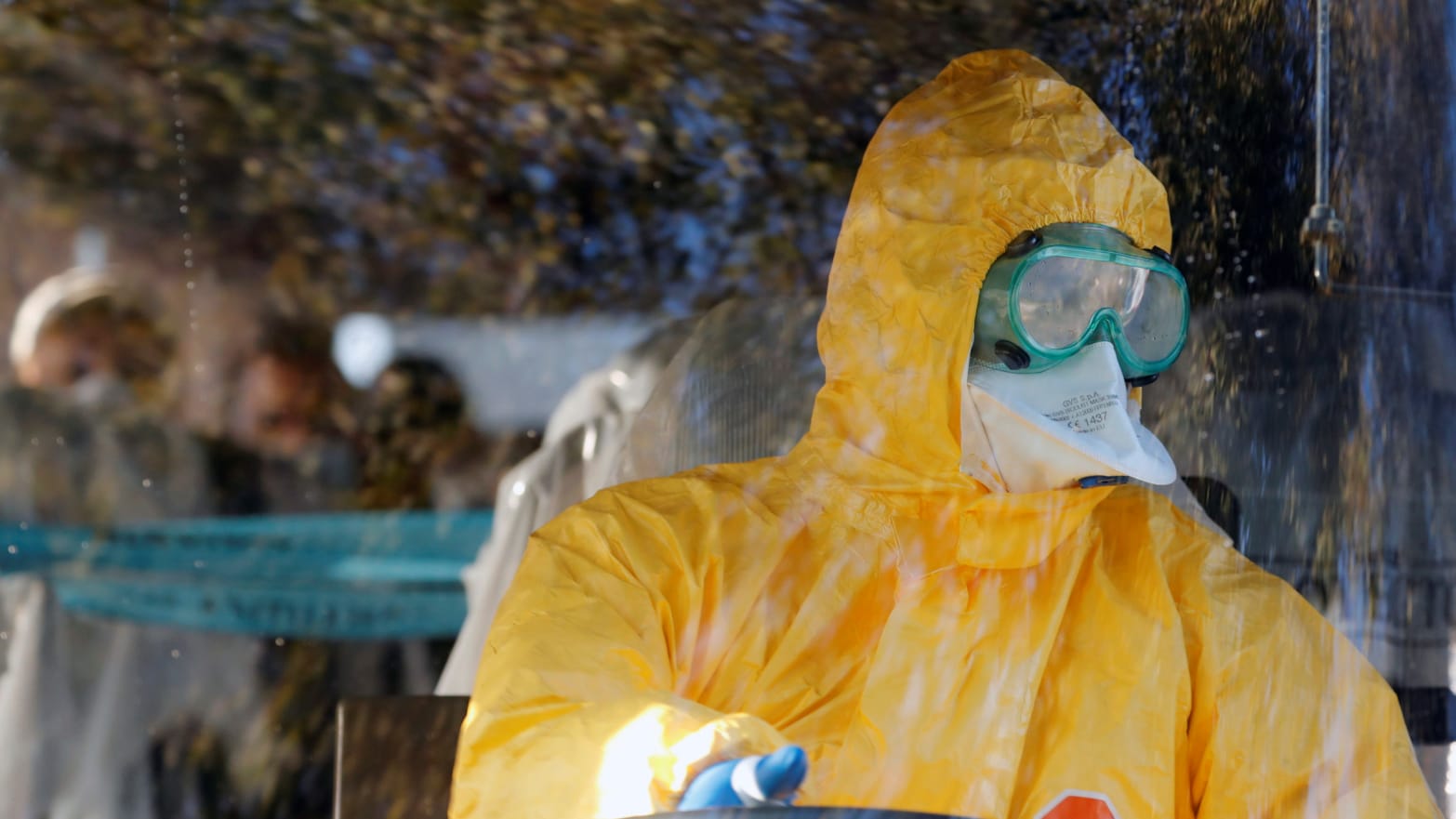ROME—The word quarantine comes from 17th-century Venetian dialect for 40 days, which was the amount of time ships had to wait in isolation before entering certain Italian ports during the pandemic known as the Black Death. Now the word is being used again in Italy, applied to the government’s draconian reaction as the coronavirus and the disease known as COVID-19 appear to be hitting the country with a vengeance. More than 50,000 Italians living in 10 communities are literally locked down, facing jail sentences and fines if they leave their homes, thanks to the largest outbreak outside Asia.
The towns, all in the north of the country, are cut off from the rest of Italy now, not even the trains stop when they roll through. The church services are cancelled and dipping one’s hand in holy water is strictly prohibited. Three major Serie A soccer games in the area have been postponed, and schools have all been closed for the foreseeable future. Anyone defying the restrictions faces three months in jail and a fine of around $250.
But all across the country, paranoia is spreading faster than the virus. Giorgio Armani tweeted that he will now hold his Fall 2020 show behind closed doors in Milan this week, livestreaming the runway from an empty theater. The mayor of Milan, a city of more than 1.3 million people, announced Sunday that all schools and universities will be closed for at least a week even though the city is not locked down under the current quarantine.
In Rome, nervous taxi drivers outside Fiumicino Airport were hesitant to pick up Asian passengers and a Chinese woman in Turin reported being assaulted for simply being Chinese.
Prime Minister Giuseppe Conte announced that all scholastic trips into and out of the country are suspended, including one involving this reporter’s son who was pulled from a flight to Budapest along with 30 other students early Sunday morning.
Matteo Salvini, the leader of the far-right League party wants to close the frontier, though countries that border Italy are likely thinking the same thing from their side. An outbreak this extensive and virulent is likely to impact all of Western Europe very quickly, if not with the disease itself, then with precautions taken to try to stop it.
Since Friday, Italian authorities have confirmed more than 150 new cases, including three fatalities, in the north of the country. Three people, including two Chinese tourists, who were confirmed positive in Rome last month have since recovered and are no longer believed to be contagious.
A Chinese tourist died in France earlier this month, but the deaths in Italy are the first Europeans killed by the virus. Both of the Italian victims were in their 70s. The first was a man who died in hospital, and who also suffered from other respiratory problems. The second was a woman found dead in her home on Saturday morning, clearly unaware she even had the virus. It is unknown how many people may have been in contact with her.
The quick spread of the disease in this outbreak and the uncertainty about how it came to Italy is especially troubling.
In the northern town of Codogno, near Milan, the 39 people who initially tested positive are all tied to the local hospital and a so-called “Patient Zero” who was thought to have brought it back from Shanghai. The problem is that “Patient Zero” never tested positive for the virus. Authorities think he may have been a silent carrier, infecting a friend referred to as “Patient One” whose only tie to China was being a friend of “Patient Zero.” Authorities at first thought “Patient Zero” had the virus and recovered, but they concede that, in fact, there may be another source. Clearly, this is not a perfect science.
On Sunday morning, the regional governor of Lombardy, Attilo Fontana, confirmed that 89 people have now tested positive for the virus and a much larger but unspecified number are referred to as suspect cases.
The second hotspot is in the Veneto region, near Venice, which is celebrating Carnevale to somewhat diminished crowds. Twelve people in the region have tested positive even though none of them has ever been to mainland China or, as far as is known at this point, been in contact with any obvious vectors. Eight Chinese residents, two of whom came back from Wuhan through via Germany, are under quarantine—but they have not tested positive. It is yet unclear if that cluster will grow.
Other cases in Turin and Milan confirmed Sunday morning have spread the panic even further. Closing down such major metropolitan hubs would be a logistical and economic disaster.
Prime Minister Conte says the situation is “fluid” and will be evaluated as the situation warrants.

